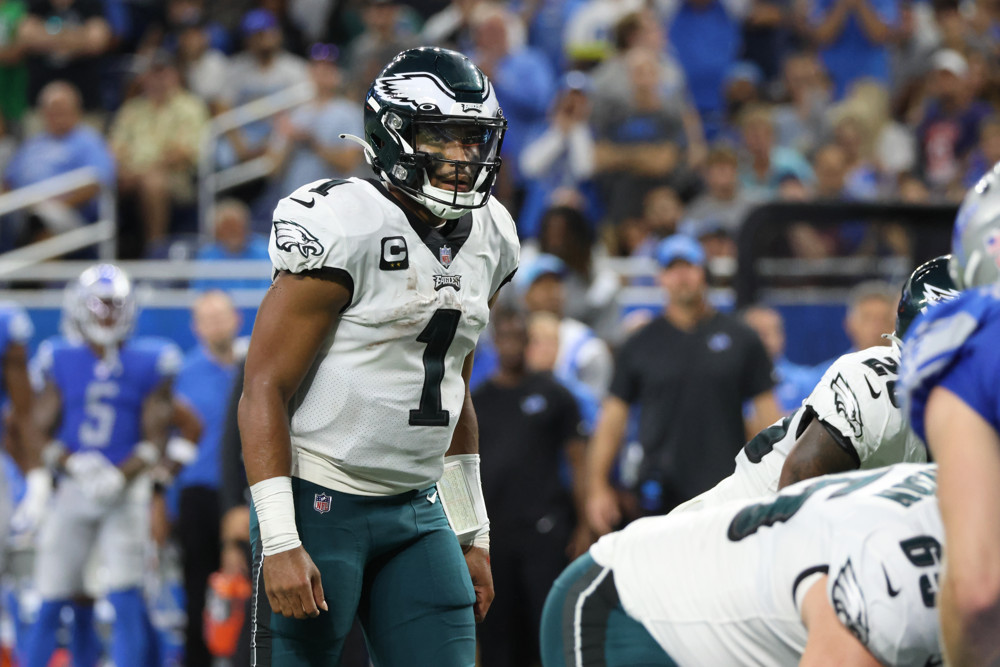With season-long fantasy contests over, many have already started entering the various fantasy football playoff competitions. In this article, I’ll discuss how to best approach and create a strategy for attacking Underdog’s Playoff best ball tournaments.
Just like any fantasy sports contest, the Underdog best ball tournament is a game and should be considered as such. It is essential to understand the intricacies of the tournament before proceeding further with a strategy. This is the fifth year Underdog has hosted playoff best ball competitions and I’ll take many of my previous learnings to design my strategy for this year.
Editor’s Note: Justin Herzig is one of the premier best ball players in the industry, competing in thousands of drafts and taking down the $200,000 top prize for Underdog Best Ball Mania I. In addition to best ball, Justin is a semi-professional high-stakes cash-game and single-entry tournament DFS player with years of consistently profitable results. This article has been updated as of Nov. 2025.
We can expect that Underdog will have many options for playoff best ball, so it’s important to pay attention to the rules and details of each. For the most part, they’ll all have a similar structure to what we’ll discuss here. This is a draft-style tournament where you select a 10-player team in a standard six-person snake draft. Once drafted, the teams are played best ball style where your top scorers will be used each round with no additional roster management. There will be four rounds of competition, each having six players in a group, with your team having to perform well each week to advance, as points are not carried over from week to week (this becomes very important when we consider our strategy).
Make sure you read the rules for each tournament. Each of the playoff best ball tournaments will likely differ in structure, with the most important factor being whether or not one or two teams advance out of the first round. If two, you can be more willing to draft teams with a bye knowing your margin of error is greater. If just one, your advance rate will be heavily influenced by hitting the first-round guys that go off with outlier performances. This means you’ll likely need to be more willing to draft one-off, high-upside pieces that can help you advance until you get your 1-seed players back in the second round. The Way Too Early Wild Card drafts have 2/6 advancing in the first round, followed by 1/10 for the next two rounds. Consider the size of the finals for how optimal of a team you’ll need to build. For example, the $5 Way Too Early Wild Card tournament has a 150-person final though smaller, higher stakes contests will likely have fewer.
The final important piece of information in the rules is roster construction. Each week, you will be able to collect points from 1 QB, 1 RB, 2 WR/TE, and 1 non-QB flex. In addition, you’ll have five bench spots.
After digesting these rules, here are my key takeaways from the format:
— These tournaments are not as top-heavy as FFPC’s, but they still pay out a large percentage to first. Our goal with each lineup should be to build a team that can thrive in the final round. If the team has no shot at succeeding in the final round (the Super Bowl), then the team won’t be +EV.
— Points are not cumulative, and you need to perform well each round to advance. This means if you stack the teams with their first-round byes, you’re likely not going to advance past the first round. It also means that for the final round, you will need to have a full roster to have any chance at winning the top prizes. This becomes very important when drafting and considering roster construction.
— You can only start at most two RBs each week. For WRs/TEs, you can start as many as three. Combined with WRs/TEs having higher weekly variance and there being more of them in the player pool, you should not be surprised to end with WR-/TE-heavy teams.
— QBs. You can only start one each week, but given the half-PPR scoring and the consistent floor/ceiling combo of QBs, it is essential to have a QB in play for every round. This does not mean you should draft a ton (I usually end up with one or two), but be very strategic about which QBs you are drafting.
My most common roster constructions include the following:
1
We've launched a new NFL Best Ball product
Best Ball is a draft-only format. No trades, no waivers, and no setting lineups. Our Best Ball team includes a mix of the most successful players and highly-regarded fantasy analysts: Adam Levitan, Justin Herzig, Evan Silva, Mike Leone, and more.
This product is designed to go well beyond our industry-leading rankings, including ADP, Late-Round Targets, Players to Scroll for, Projected Ownership, Market Movement Reports and more.
Click below to learn more about what’s inside our NFL Premium Best Ball subscription.
Best Ball Product Details » Already a subscriber? Log In

